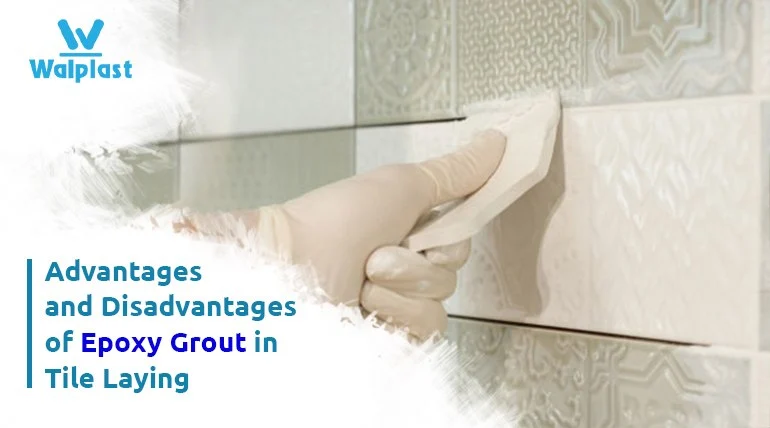
When it comes to tiling, the grout you choose is just as important as the tiles themselves. Epoxy grout has emerged as a superior alternative to traditional cement-based grout, offering enhanced durability, resistance, and aesthetic flexibility. Let’s dive into the world of epoxy grout and explore its advantages and disadvantages for your tiling needs.
The Strength of Epoxy Grout:
Epoxy consists of two main components—epoxy resins and hardener, when mixed with filler and colour it can be created into any required colour—that create a hard and dense bond once its sets. Its superior chemical resistance and flexibility make it a premium grout choice for both residential and commercial spaces. It’s particularly effective at filling tile gaps, providing a long-lasting, problem-free installation.
Informed Choices: Knowledgeable tile professionals at showrooms often inquire about your intended installation location (indoor/outdoor) before recommending tile and grout types. This ensures compatibility and a long-lasting result.
Advantages of Epoxy Grout:
Epoxy grout offers a multitude of advantages over traditional grouts, making it a popular choice for both homeowners and professionals. Let’s delve into some of its key benefits:
- Unmatched Durability: Epoxy grout boasts superior strength and resilience. Its chemical-resistant properties make it highly resistant to wear, fading, chipping, and cracking. With proper care, it can last virtually a lifetime.
- Goodbye Mold and Mildew: Forget the constant battle against mold and mildew growth that plagued traditional grouts. The non-porous nature of epoxy grout prevents these unsightly and potentially harmful organisms from taking hold. This makes it ideal for use in both dry areas like living rooms and moisture-prone areas like bathrooms and kitchens.
- Effortless Maintenance: Say goodbye to scrubbing stubborn stains! Epoxy grout’s stain resistance makes it incredibly easy to maintain. A simple wipe with a damp cloth removes dirt, grime, and even tough stains, keeping your tiled surfaces looking beautiful for years to come.
- A Spectrum of Colours: Gone are the days of limited grout colour options. Today’s epoxy grouts come in a wide array of colours, allowing you to unleash your creativity and personalize your tiled spaces. Experiment with different grout colours to create stunning visual effects and enhance the overall aesthetic of your project.
- Aesthetic Appeal: Epoxy grout offers a sleek and uniform appearance, enhancing the overall look of tiled surfaces. Its smooth finish and ability to maintain colour consistency over time contribute to a polished aesthetic.
Disadvantages of Epoxy Grout
- Higher Initial Cost with Long-Term Savings: Epoxy grout’s upfront cost is higher compared to traditional grout, yet investing more initially can lead to savings over time. Its longevity and lower maintenance requirements can result in overall cost-effectiveness, despite the initial investment.
- UV Sensitivity: Historically, epoxy grout was not UV resistant, which could lead to yellowing or discolouration when exposed to sunlight over time. However, advancements in technology have led to the development of UV-stable formulations that mitigate this issue.
- Skilled Applicator Recommended: The application of epoxy grout can be more complex than that of traditional grout. It requires precision, speed, and experience due to its fast curing time and the need for proper mixing and application techniques. Therefore, it’s often recommended that a skilled professional handle the installation.
- Time-Bound Application: Epoxy grout has a limited working time, known as the pot life, after which it begins to harden and becomes difficult to work with. This requires applicators to work efficiently and in smaller sections, which can prolong the overall installation process.
Applying Epoxy Grout for a Flawless Finish
Epoxy grout offers superior performance, but achieving a smooth application requires careful technique. Here’s a breakdown of the process:
- Mixing Meticulously: Follow the manufacturer’s instructions on the label for precise mixing ratios of the epoxy resin and hardener. Accurate proportions are crucial for optimal performance and to avoid wasted materials.
- Preparation for Speed: Epoxy grout sets quickly, so have all your tools readily available. This might include a grout float, rubber trowel, bucket, sponges, and a cleaning solution (vinegar and water mix). Working in smaller sections helps manage the drying time.
- Grouting the Gaps: Using your grout float or trowel, spread the epoxy mixture diagonally across the tiles, filling the joints completely. Immediately remove excess grout with a damp cloth, working diagonally across the tiles to avoid streaking.
- Cleaning Up: Once the grouting is complete, clean the tile surfaces thoroughly. A solution of Thinner or soap water is an effective cleaning agent. Wipe the tiles in a circular motion, rinsing your sponge frequently to prevent the spreading of grout residue.
Remember: Time is of the essence when working with epoxy grout. Plan your approach, work efficiently, and prioritize cleaning as you go for a flawless finish.
In Conclusion:
Epoxy grout stands out as a premium choice for tiling projects, offering exceptional durability, stain resistance, and ease of maintenance. However, its quick-drying nature and precise mixing requirements demand a well-planned approach. For DIY enthusiasts, careful preparation and swift application are essential. Considering both the advantages and limitations of epoxy grout will help you make an informed decision for your next tiling project.
